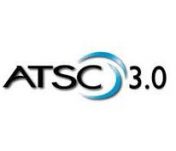Brazil adopts ATSC 3.0 for next-gen TV
August 28, 2025
By Colin Mann

Brazil’s official adoption of its ‘DTV+’ system marks a major milestone in the Americas’ transition to next-generation broadcasting, according to ATSC, The Broadcast Standards Association, the international standards development organisation behind the suite of standards known as ATSC 3.0.
Brazilian President Luiz Inácio Lula da Silva signed a landmark Presidential Decree on August 27th establishing the ATSC 3.0-based DTV+ system as the country’s television format of the future. The system already is on the air with experimental broadcasts in Rio de Janeiro and São Paulo, and the country plans for a Brasilia station launch later in 2025. Commercial services are anticipated to begin in time for the FIFA World Cup event in 2026.
ATSC 3.0 technology is used in Brazilian DTV+ format’s core Physical and Transport layers, as well as the Video, Audio, Captioning and Emergency Warning systems. The Decree comes just one week after the SET Expo, the largest gathering of broadcasting, media, and entertainment in Latin America.
According to ATSC President Madeleine Noland, Brazil’s adoption of ATSC 3.0 technologies is particularly significant because terrestrial TV broadcasting remains the most popular platform for consumer viewing in Brazil, where it is used by about 80 per cent of the population.
“Brazil’s decision is further testimony that the international ATSC 3.0 standards is state-of-the-art and underscores its flexibility to meet the needs of a large and diverse country with such high reliance on terrestrial television viewing,” said Noland.
ATSC Vice President of Standards Development Luiz Fausto, who was deeply engaged with testing for the new Brazilian standard, said: “Broadcasters throughout Brazil take seriously the decisions about how best to reach nearly 200 million viewers, and the decree is the culmination of a long process that evaluated various next-generation broadcast technologies to select the ‘best of the best’ that will serve broadcasters and viewers for decades to come.”
The Brazilian DTV+ system, previously referred to by its developers as ‘TV 3.0’, utilises many elements of ATSC 3.0, the suite of broadcast TV standards used in the United States for NEXTGEN TV, and in South Korea for UHD Broadcast. ATSC 3.0 has also been adopted by Jamaica and Trinidad & Tobago, and it is currently being considered and tested by a number of other nations, including Canada, India and Mexico.
